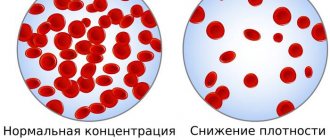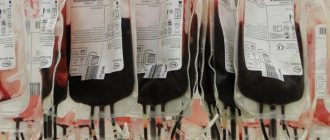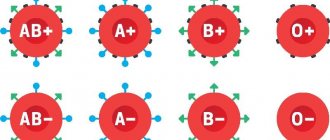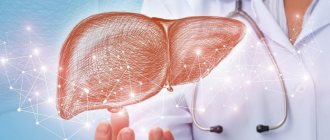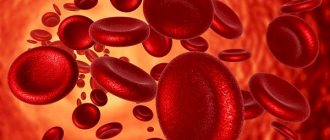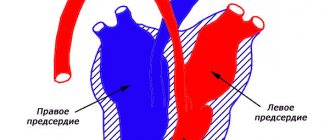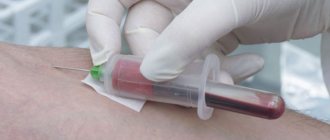pharmachologic effect
Manufacturer: Ozone, Canon Pharma, Russia/Takeda, Denmark
Release form: tablets
Active ingredient: Warfarin
Synonyms: Warfarex, Warfarin Nycomed
Warfarin has an anticoagulant effect due to blocking the synthesis of blood coagulation factors dependent on vitamin K, reducing their content in the blood and slowing down coagulation.
The onset of action usually occurs on the second day of administration, the maximum effect occurs after about a week. After discontinuation of the vitamin-K medication, dependent factors are restored on average within five days.
Drugs with similar effects
The choice of a Warfarin substitute requires medical supervision, examination of the patient's medical history and constant monitoring of INR values. It is important to take into account contraindications, side effects, correctly evaluate the composition and calculate the dosage.
Warfarex
The anticoagulant is intended for long-term use and is indicated for deep vein thrombosis, pulmonary embolism, myocardial infarction, atrial fibrillation, and heart valve replacement. Tablets are taken once a day at an initial dose of 2.5-5 mg. Description:
- Active ingredient: warfarin.
- Mechanism of operation: prevents blood clotting, inhibits the synthesis of factors involved in this process, prevents the formation of blood clots and the increase in existing ones.
- Side effects compared to the analogue: dark red color of the toes, itching, dermatitis, urticaria, nausea, vomiting, jaundice, fever, weakness, alopecia.
- Contraindications: internal bleeding, jaundice, bacterial endocarditis, diabetes mellitus, hemorrhagic diathesis, thrombocytopenia, alcoholism, hypertension, childhood, pregnancy, lactation, gastric ulcer.
- Price, rubles: 125 for 100 tablets.
Article on the topic: Gangrene - causes, types and methods of treatment
Marevan
The indirect-acting anticoagulant has an effect already on the 2-7th day of administration and accumulation in plasma. Its indications for use are deep vein thrombosis, prevention of myocardial infarction and thromboembolism, treatment of transient ischemic attacks and strokes. The starting dose of Marevan is 10.5 mg. Description:
- Active ingredient: warfarin sodium.
- Mechanism of operation: blocks the synthesis of vitamin K-dependent blood clotting factors in the liver.
- Side effects compared to the analogue: bleeding, nausea, vomiting, hepatitis, diarrhea, priapism, vasculitis, skin necrosis, tracheal calcification.
- Contraindications: von Willebrand disease, hemophilia, thrombocytopenia, hemorrhagic diathesis, jaundice, infective endocarditis, exudative pericarditis, diabetes mellitus, exacerbation of gastric ulcers, diverticulosis, malignant tumors, dementia, psychosis, alcoholism, 1st and 3rd trimesters of pregnancy.
- Price, rubles: 150 per 100 pcs.
Clopidogrel
A specific active inhibitor of platelet aggregation has a coronary dilation effect. Inhibition of blood cell aggregation is observed within 2 hours after administration. The drug is indicated for the prevention of thrombotic complications. Clopidogrel is taken orally, regardless of food, 75 mg per day for 1–24 weeks. Description:
- Active ingredient: clopidogrel.
- Mechanism of operation: reduces the binding of adenosine triphosphate to platelet receptors, weakens their aggregation.
- Side effects compared to the analogue: purpura, hematomas, leukopenia, agranulocytosis, hallucinations, paresthesia, vasculitis, hypotension, bronchospasm, diarrhea, dyspepsia, gastritis, colitis, arthralgia, glomerulonephritis, eczema, urticaria.
- Contraindications: severe liver failure, acute bleeding, pregnancy, breastfeeding, age under 18 years.
- Price, rubles: 465 for 14 tablets.
Sinkumar
The indirect anticoagulant contains an alkaloid, the peak of action of which occurs on the 1st–2nd day after administration. Sinkumar is indicated for the treatment and prevention of thrombosis and embolic strokes. The dose is prescribed individually, on the first day it is 4–8 tablets, the daily maintenance dose is 1–6 mg. Description:
- Active ingredient: acenocoumarol.
- Mechanism of action: antagonistic effect on vitamin K, disrupts the synthesis of prothrombin and blood clotting factors.
- Side effects compared to the analogue: nausea, diarrhea, headache, rash, bleeding.
- Contraindications: hemorrhagic diathesis, liver and kidney dysfunction, malignant neoplasms, physical exhaustion, hypovitaminosis K and C, diabetic retinopathy, pregnancy, lactation.
- Price, rubles: 775 for 50 tablets.
Lopirel
The antiplatelet drug has a coronary dilation effect, which manifests itself 2 hours after administration. Lopirel is used for the prevention of atherothrombosis after myocardial infarction or ischemic stroke. The medicine is taken regardless of food, 75 mg once a day. Course – from 7 days to six months. Description:
- Active ingredient: clopidogrel.
- Mechanism of operation: suppresses platelet aggregation, prevents the development of atherothrombosis.
- Side effects compared to the analogue: headache, confusion, diarrhea, colitis, hepatitis, leukopenia, anemia, purpura, hemarthrosis, lichen planus, bullous rash, urticaria, vasculitis, bronchospasm, arthritis, glomerulonephritis, fever.
- Contraindications: liver failure, hemorrhagic syndrome, acute bleeding, pregnancy, lactation, age under 18 years, lactase deficiency.
- Price, rubles: 270 for 14 tablets.
Warfarin - instructions for use
Doses of Warfarin are calculated experimentally. Depending on laboratory parameters. Before prescribing therapy, the patient is measured with prothrombin time (PTT) - this is the time during which a blood clot forms in response to damage to the vessel; normally it is about 11-16 seconds. Then the international normalized ratio (INR) is calculated - equal to the ratio of the patient's PTV to the PTV of a healthy person. Normally, the INR is 0.85–1.35.
In the first four days of treatment, the patient is given 2 Warfarin tablets per day - once, at the same time. On the fifth day, the INR is determined again, which should increase to 2–3 during treatment, and 2.5–3.5 during heart valve replacement and acute myocardial infarction with complications.
Depending on the indicator, a maintenance dose is prescribed. Usually this is 1-3 tablets per day. INR monitoring is carried out every month, and the dose is adjusted if necessary.
The course of treatment with Warfarin depends on the type of disease and individual characteristics of the body and is determined by the doctor. If necessary, the drug is discontinued immediately.
If a patient is re-prescribed Warfarin, then therapy is started with twice the average dose of this particular patient in the first 2 days, then treatment is continued with the average dose. On the fifth day, the INR is also monitored and, if necessary, the dose is adjusted.
For children, the dose is selected based on body weight, functional state of the liver and INR, the level of which should be the same as in adults. The child is treated under the supervision of an experienced pediatrician. In the instructions for use of Warfarin, doses for children are described in more detail.
How to take Warfarin - before or after meals
It does not matter how you take Warfarin, before or after meals. The main thing is to take it at the same time of day, never missing a dose.
Complexes with this research
Preventive check-up Universal annual preventive screening RUB 3,570 Composition
Examination during pregnancy. 1st trimester 10,260 ₽ Composition
Pregnancy planning. Clinical indicators RUR 3,890 Composition
IN OTHER COMPLEXES
- Expanded hospital complex RUB 4,390
- For those at risk of COVID-19 RUB 2,570
- Extended coagulogram RUB 2,790
- Women's check-up No. 1 RUB 11,880
- Men's check-up No. 1 RUB 10,960
Warfarin analogues that do not require INR control
It is important to decide what to replace Warfarin with so as not to control the INR, since this brings a lot of inconvenience for the patient, frequent visits to the clinic and tests.
Warfarin analogues that do not require INR control include:
- antiplatelet agents - Plavix, Cardiomagnyl, Thrombo ACC, Aspirin Cardio;
- direct-acting anticoagulants - Pradaxa, Eliquis, Xarelto, Clexane.
Prices for Warfarin analogues can be compared in the table
| Analogue | Active substance | Average price of a package for a minimum course of treatment, rub. | Country of origin |
| Warfarin | Warfarin | 60 | Russia |
| Warfarin Nycomed | Warfarin | 100 | Denmark |
| Cardiomagnyl | Acetylsalicylic acid + Magnesium hydroxide | 150 | Germany |
| Thrombo Ass | Acetylsalicylic acid | 80 | Austria |
| Clexane | Enoxaparin Sodium | 2000 | France |
| Pradaxa | Dabigatran etexilate | 1900 | Germany |
| Xarelto | Rivaroxaban | 1700 | Germany |
| Eliquis | Apixaban | 1000 | USA |
Pradaxa
Manufacturer: Boehringer Ingelheim, Germany
Release form: capsules
Active ingredient: Dabigatran etexilate
Warfarin substitute Pradaxa is a German original drug, a direct-acting anticoagulant, which is converted into an active form in the body and directly and reversibly inhibits thrombin activity. Therefore, this analogue prevents the formation of blood clots.
An analogue of Pradaxa is produced in 75, 110 and 150 mg doses, the therapeutic dose is selected by the doctor. Capsules should not be opened.
The Warfarin analog Pradaxa is used for the treatment of acute thrombosis and thromboembolism and significantly reduces the risk of death from these diseases.
An INR test is not required during treatment with Pradaxa.
Sinkumar
Manufacturer: Meda Pharma, Germany
Release form: tablets
Active ingredient: Acenocoumarol
Analogue Sinkumar is an indirect anticoagulant. Like Warfarin, it is a vitamin K antagonist and inhibits the synthesis of vitamin K-dependent blood clotting factors.
The Warfarin analog Sincumar is used to treat pulmonary thromboembolism, coronary artery thrombosis and phlebothrombosis.
Treatment with Sinkumar should be accompanied by constant monitoring of coagulation parameters, namely prothrombin time and INR.
Clexane
Manufacturer: Sanofi, France
Release form: injection solution
Active ingredient: Enoxaparin sodium
Synonyms: Enixum, Anfibra, Gemapaksan
The Clexane analogue is a direct anticoagulant that acts by inhibiting the function of the thrombokinase enzyme, a blood clotting factor.
Clexane is a low molecular weight heparin, an injection solution with various concentrations of the active substance.
The drug is administered subcutaneously or intravenously; it cannot be used intramuscularly. Treatment is often carried out in a hospital setting for patients on bed rest.
No additional monitoring of blood parameters is required.
Comparison with Xarleto
Xarleto is an anticoagulant based on rivaroxaban. It is usually produced in the form of tablets, but there are also injection solutions in ampoules. The following mechanisms of action are distinguished:
- activation of Factor Xa;
- suppression of the conversion of prothrombin to thrombin;
- decreased fibrin thrombus formation, platelet activation.
The effect on the coagulation system depends on the dose of the drug. The higher it is, the stronger the effect. The drug is different in that the doctor does not need to periodically monitor the INR. This indicator is calibrated for the drug.
The drug increases APTT, but the doctor does not need to periodically measure this parameter; this is the main difference between the drug and warfarin-based drugs.
When taking tablets, absorption occurs in the gastrointestinal tract. If you use an injection, the active substance directly enters the bloodstream. The connection with blood plasma proteins is high. Metabolism occurs in the liver and excretion occurs through urine and feces. Both metabolites and stored active components are removed. Indications for use:
- prevention, treatment of stroke, thromboembolism, fibrillation;
- treatment of deep vein thrombosis, prevention of relapses.
Xarleto is recommended by phlebolologists and cardiologists due to good clinical trial results. However, it has a number of negative consequences, which are taken into account when prescribing for patients of a certain age and condition of internal organs.
Side effects and contraindications
Despite the absence of the need to check the coagulation system during treatment, the drug has a number of negative reactions on the body. It is prohibited to be used in combination with other anticoagulants. Bleeding will inevitably occur. It is contraindicated in the following conditions:
- bleeding of external and internal organs;
- peptic ulcer of the stomach and duodenum, malignant tumors, injuries of the brain and spinal cord, recent operations;
- pathologies of the venous system (varicose veins, thrombophlebitis);
- inflammatory liver diseases accompanied by coagulation disorders;
- severe kidney pathologies;
- pregnancy, breastfeeding, minor age.
The drug can be used, but with caution if there is a low risk of bleeding during inflammation of internal organs, mild or moderate kidney damage. It has the following side effects:
- reduction of blood sprouts;
- dizziness, headache;
- hemorrhage, bleeding gums and nasal passages;
- decreased liver and kidney function;
- fever.
If any adverse reactions occur, the drug should be discontinued immediately. Before prescribing therapy, tell the doctor about all the medications the patient is taking to avoid cross-interactions. This is especially true for non-steroidal anti-inflammatory drugs.
Warfarin or Aspirin Cardio – which is better?
Manufacturer: Bayer, Germany
Release form: film-coated tablets
Active ingredient: Acetylsalicylic acid
Synonyms: Thrombo ACC, Thrombopol, CardiASK, ASC Cardio
Warfarin analogue Aspirin Cardio is an original German drug that has an antiplatelet effect by blocking the enzyme cyclooxygenase-1, and thus preventing platelet aggregation.
The analogue of Aspirin Cardio is used mainly for prophylactic purposes to prevent cerebrovascular accidents, stroke, acute myocardial infarction, and complications after vascular surgery.
One of the indications for the use of the Aspirin Cardio analogue is stable and unstable angina.
The active ingredient Acetylsalicylic acid in doses of 500 mg has an analgesic, antipyretic and anti-inflammatory effect.
Characteristics of Pradaksa
Pradaxa is an anticoagulant based on dabigatran etexilate. It is used orally, intravenously. It refers to drugs that inhibit thrombin. The following pharmacological actions are distinguished:
- suppression of thrombin formation;
- inhibition of the transition of fibrinogen to fibrin;
- elimination of platelet aggregation.
The more active substance is in the blood plasma, the higher its effectiveness. The medicine prolongs the APTT, but does not affect the INR. Therefore, coagulation measurements are not required during therapy. This is the main difference from warfarin-based drugs. The product has the following indications for use:
- venous thromboembolism after surgery;
- risk of stroke, atrial fibrillation;
- deep vein thrombosis, pulmonary embolism.
The medicine is strictly prohibited during pregnancy and lactation. During this period, the ratio of clotting factors changes, which can lead to DIC syndrome during childbirth. This is a condition for which therapy with such agents is not recommended.
Side effects and contraindications
Negative consequences arise from individual intolerance. They often form if the patient carries out therapy independently. The following types of side effects are distinguished:
- decrease in red blood cells and platelets;
- local, systemic allergy;
- bleeding, hemoptysis, hemorrhage into internal organs;
- dyspepsia, nausea, inflammation of various parts of the gastrointestinal tract;
- liver dysfunction, jaundice.
There are quite a lot of contraindications. Therefore, before prescribing the drug, doctors collect the patient’s medical history and be sure to identify the drugs that he uses. Contraindications for use:
- increased sensitivity to the product;
- severe diseases of the liver, kidneys, gastrointestinal tract;
- hemorrhagic diathesis, reduced number of platelets and clotting factors, periodic bleeding;
- malignant neoplasms, brain damage, ophthalmological operations, increased intracranial pressure, varicose veins;
- use of any types of anticoagulants;
- minor age, pregnancy, lactation.
There are diseases for which the drug is used, but with caution. Then it is recommended to carry out a detailed coagulogram and constantly calculate the number of platelets and clotting factors. If a side effect occurs, the drug is immediately discontinued.
Warfarin or Thrombo ACC – which is better?
Manufacturer: Lannacher, Austria
Release form: film-coated tablets
Active ingredient: Acetylsalicylic acid
Synonyms: Aspirin Cardio, Thrombopol, CardiASK
To thin the blood, Warfarin can be replaced with the Austrian drug Trombo ACC, which contains acetylsalicylic acid in 50 and 100 mg doses. In these tiny doses it has antiplatelet properties.
An analogue of Thrombo ACC can be freely purchased without a doctor’s prescription and taken 1 tablet daily for the prevention of heart attack, stroke, and other diseases accompanied by increased thrombus formation.
An analogue of Thrombo ACC is also prescribed after vascular surgery.
To prevent the negative effects of acid on the stomach, Trombo ACC tablets are coated with a special enteric coating. Therefore, they should not be chewed or divided in half.
Warfarin or Cardiomagnyl - which is better?
Manufacturer: Takeda, Germany
Release form: film-coated tablets
Active ingredient: Acetylsalicylic acid + Magnesium hydroxide
Synonyms: Fasostabil, TromboMag, Trombital
A substitute for Warfarin without INR control, Cardiomagnyl is an over-the-counter complex drug consisting of acetylsalicylic acid and magnesium hydroxide, which is needed to protect the gastric mucosa from the damaging effects of acid. If acetylsalicylic acid is used for a long time without protecting the stomach, it can lead to ulcers or gastritis.
The antiplatelet drug Cardiomagnyl is used for the prevention of cardiovascular diseases characterized by increased thrombus formation, including stroke or heart attack.
For preventive purposes, the Cardiomagnyl analogue is taken 150 mg on the first day, then 75 mg once a day on an ongoing basis.
If there have already been cases of heart attack or stroke, the drug is prescribed 150 mg daily.
Warfarin or Xarelto - which is better for thrombosis and atrial fibrillation
Manufacturer: Bayer, Germany
Release form: film-coated tablets
Active ingredient: Rivaroxaban
The imported analogue of Xarelto is an original German drug that has no synonyms. This is a direct-acting anticoagulant, selectively suppresses factor Xa, as a result prevents the formation of blood clots and does not require regular blood tests to determine PTT and INR.
Doses of the Xarelto analog range from 2.5 to 15 mg. The doctor decides which one to use for certain indications.
Doses of up to 10 mg of Xarelto are prescribed for prophylaxis once a day, 20–30 mg per day is required for the treatment of thromboembolism, atrial fibrillation, and venous thrombosis.
New generation warfarin analogues
Taking the pill comes with many complications, including constantly measuring the International Normalized Ratio value. New blood thinners have been developed. It is not always possible to take a Warfarin analogue without INR control. The drugs have fewer side effects and are used for treatment and prevention.
Disadvantages: high cost, they are rarely on sale.
Pradaxa
A new generation antithrombotic substitute for Warfarin is used for the prevention of venous thromboembolism, stroke, systemic thromboembolism, and atrial fibrillation. Pradaxa capsules are taken 1 pc. 1-2 times a day, regardless of meals. Description:
- Active ingredient: dabigatran etexilate.
- Mechanism of action: anticoagulant effect, inhibits thrombin activity.
- Side effects in comparison with the analogue: thrombocytopenia, urticaria, bronchospasm, intracranial bleeding, hematomas, hemoptysis, dyspepsia, dysphagia, gastroesophagitis, hyperbilirubinemia, hemarthrosis, hematuria, arrhythmia, hypertension.
- Contraindications: renal failure, active bleeding, hemorrhagic diathesis, liver and kidney dysfunction, age under 18 years.
- Price, rubles: 3175 for 60 capsules.
Xarelto
A direct-acting anticoagulant is indicated for the prevention of venous thromboembolism after major surgery. Xarelto is taken orally, regardless of food intake, 10 mg once a day for a course of 2-5 weeks. Description:
- Active ingredient: rivaroxaban.
- Mechanism of operation: prolongs the time of thrombus formation, protects against internal coronary bleeding.
- Side effects compared to the analogue: anemia, hemorrhagic complications, weakness, dizziness, shortness of breath, angina, hematomas, dyspepsia, headache, allergic dermatitis, fever, jaundice.
- Contraindications: internal bleeding, pregnancy, lactation, age under 18 years, atherosclerosis, cardiovascular failure.
- Price, rubles: 9475 for 100 tablets.
Warfarin or Eliquis – which is better?
Manufacturer: Pfizer, USA
Release form: film-coated tablets
Active ingredient: Apixaban
Eliquis is an analogue of Warfarin that does not require INR control; it is a direct anticoagulant.
The drug blocks factor Xa, which stimulates blood clotting, and prevents blood clots.
The American analogue Eliquis is taken to prevent thrombosis during endoprosthetics, stroke and thrombosis in patients with atrial fibrillation.
The Warfarin analog Eliquis is available in the form of tablets of 2.5 and 5 mg. The usual dosage regimen is 2 tablets per day, 2.5 mg for prevention, and 5–10 mg for the treatment of venous thrombosis and pulmonary embolism.
Reviews from patients indicate that the medication is well tolerated.
Warfarin or Phenilin
, Ukraine
Release form: tablets
Active ingredient: Phenindione
Warfarin analog Phenilin is an indirect anticoagulant that blocks the enzyme K-vitamin reductase. It is used for the treatment and prevention of thrombosis and embolism, for prosthetic heart valves.
Doses are selected based on laboratory tests.
The disadvantage of the Phenilin analogue is the requirement for constant monitoring of not only prothrombin time and INR, but also regular analysis of coagulograms, thromboelastograms and platelet counts.
Characteristics of Warfarin
Warfarin is an indirect anticoagulant. Based on the active ingredient of the same name. The medicine is produced in different forms. It is used orally, intravenously. The latter action is more effective, since the active component minutes physiological barriers, immediately entering the systemic bloodstream.
The synthesis of vitamin K and clotting factors stops, so blood clots stop forming.
Absorption after oral administration occurs in the gastrointestinal tract. The binding of blood plasma proteins is high. Metabolism occurs in the liver, excretion occurs in bile and urine. If you take the medicine for a long time, follow a diet. Nutrition is prescribed by a phlebologist and nutritionist.
The product is indicated for use in the treatment and prevention of the following diseases:
- thrombosis;
- thromboembolism;
- heart attack caused by blockage by a blood clot;
- ischemic attacks, stroke.
The product is used only according to the instructions from the doctor; self-medication should not be carried out. This is due to the fact that it causes many negative reactions, even death, if used incorrectly.
Side effects, contraindications for use
Negative actions occur frequently, especially in patients with individual intolerance. Therefore, before prescribing the drug, the patient is completely examined, conducting a detailed coagulogram. The following side effects are possible:
- increased bleeding;
- dyspepsia, impaired stool formation, discharge of blood in feces;
- inflammation of blood vessels, necrosis of skin areas;
- local and systemic allergic reactions;
- increased liver enzymes, jaundice;
- nose bleed.
The medicine is strictly contraindicated in cases of bleeding, severe kidney and liver diseases, disseminated intravascular coagulation syndrome, and a decrease in platelet count. It is not recommended to use it for inflammatory diseases, damage to veins and arteries. Not compatible with alcohol. Severe defects may occur with gastric and duodenal ulcers, endocarditis, arterial hypertension, a tendency to strokes and intracranial hemorrhages.
INR control
INR (international normalized ratio) is a blood test in a detailed coagulogram, recognized to show the quality of the coagulation system. If the value is above the average acceptable level, there is a risk of bleeding, especially with the use of certain categories of anticoagulants, which include Warfarin.
The drug greatly affects the number of clotting factors and the number of platelets. It prevents blood clotting by changing the INR level. The risk group includes patients with the following diseases:
- increased intracranial pressure;
- arterial hypertension;
- tendency to strokes and heart attacks.
Patients at risk are recommended to use the drug only in a hospital setting. When using it, blood is constantly donated for a coagulogram to determine the INR. This is inconvenient for the attending physician, so many of them prefer anticoagulants without affecting this indicator.
Answers on questions
How to replace Warfarin for atrial fibrillation
With atrial fibrillation or atrial fibrillation, the risk of blood clots increases; to prevent this phenomenon, Warfarin analogues and substitutes are prescribed - direct or indirect anticoagulants.
When is it better to take Warfarin - morning or evening?
The time of day does not matter when taking Warfarin. It is important to take regularly, at the same time.
Warfarin - direct or indirect anticoagulant
The drug belongs to the group of indirect anticoagulants, since it does not act directly on thrombin, but as a vitamin K antagonist.
